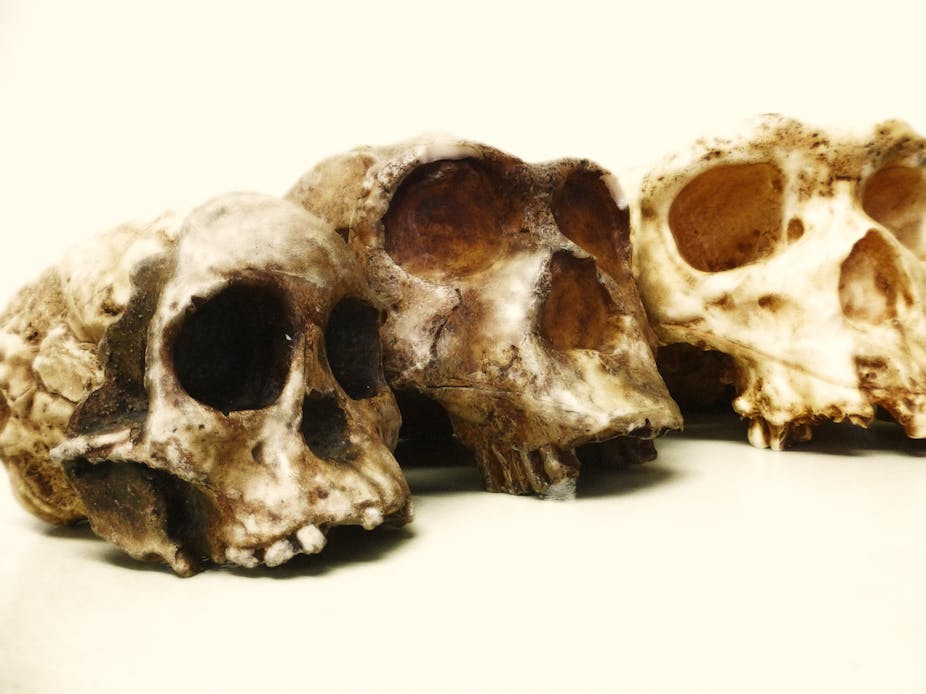Cryo-EM structure of Mcm2-7 double hexamer on DNA suggests a lagging-strand DNA extrusion model
Yasunori Noguchia,b,1, Zuanning Yuanc,1, Lin Baic,1, Sarah Schneidera,b, Gongpu Zhaoc, Bruce Stillmand,2, Christian Specka,b,2, and Huilin Lic,2
Author Affiliations
a DNA Replication Group, Institute of Clinical Sciences, Faculty of Medicine, Imperial College London, London W12 0NN, United Kingdom;
b Medical Research Council London Institute of Medical Sciences, London W12 0NN, United Kingdom;
c Cryo-EM Structural Biology Laboratory, Van Andel Research Institute, Grand Rapids, MI 49503;
d Cold Spring Harbor Laboratory, Cold Spring Harbor, NY11724
Contributed by Bruce Stillman, September 20, 2017 (sent for review July 16, 2017; reviewed by Stephen Bell and Eric J. Enemark)
DNA follows a zig-zag path inside a channel created by two 6-sided rings. This new atomic-level made with cryo-EM technology, suggests how DNA interacts with the two rings just prior to being separated into 'leading' and 'lagging' strands. All life depends on absolutely precise choreogrpahy, when one cells beings to replicate its DNA in order to make two cells.
Credit: Van Andel Research Institute
Significance
During initiation of DNA replication in eukaryotes, the origin recognition complex, with Cdc6 and Cdt1, assembles an inactive Mcm2-7 double hexamer on the dsDNA. Later, the double hexamer recruits Cdc45 and GINS to form two active and separate DNA helicases. The active Cdc45–Mcm2-7–GINS helicase encircles the leading strand while excluding the lagging strand. One of the fundamental unanswered questions is how each Mcm2-7 hexamer converts from binding dsDNA to binding one of the single strands. The structure of the double hexamer on dsDNA reveals how DNA interacts with key elements inside the central channel, leading us to propose a lagging-strand extrusion mechanism. This work advances our understanding of eukaryotic replication initiation.
Abstract
During replication initiation, the core component of the helicase—the Mcm2-7 hexamer—is loaded on origin DNA as a double hexamer (DH). The two ring-shaped hexamers are staggered, leading to a kinked axial channel. How the origin DNA interacts with the axial channel is not understood, but the interaction could provide key insights into Mcm2-7 function and regulation. Here, we report the cryo-EM structure of the Mcm2-7 DH on dsDNA and show that the DNA is zigzagged inside the central channel. Several of the Mcm subunit DNA-binding loops, such as the oligosaccharide–oligonucleotide loops, helix 2 insertion loops, and presensor 1 (PS1) loops, are well defined, and many of them interact extensively with the DNA. The PS1 loops of Mcm 3, 4, 6, and 7, but not 2 and 5, engage the lagging strand with an approximate step size of one base per subunit. Staggered coupling of the two opposing hexamers positions the DNA right in front of the two Mcm2–Mcm5 gates, with each strand being pressed against one gate. The architecture suggests that lagging-strand extrusion initiates in the middle of the DH that is composed of the zinc finger domains of both hexamers. To convert the Mcm2-7 DH structure into the Mcm2-7 hexamer structure found in the active helicase, the N-tier ring of the Mcm2-7 hexamer in the DH-dsDNA needs to tilt and shift laterally. We suggest that these N-tier ring movements cause the DNA strand separation and lagging-strand extrusion.
DNA replication helicase DNA unwinding mini chromosome maintenance cryo-electron microscopy
Footnotes
1Y.N., Z.Y., and L.B. contributed equally to this work.
2To whom correspondence may be addressed. Email: stillman@cshl.edu, chris.speck@imperial.ac.uk, or Huilin.Li@VAI.org.
Author contributions: Y.N., B.S., C.S., and H.L. designed research; Y.N., Z.Y., L.B., S.S., and G.Z. performed research; Y.N., Z.Y., L.B., S.S., G.Z., B.S., C.S., and H.L. analyzed data; and B.S., C.S., and H.L. wrote the paper.
Reviewers: S.B., Howard Hughes Medical Institute, MIT; and E.J.E., St. Jude Children’s Research Hospital.
The authors declare no conflict of interest.
Data deposition: The cryo-EM 3D map of double hexamer-dsDNA at 3.9 Å resolution has been deposited at the Electron Microscopy Data Bank (EMDB) database (accession no. EMD-9400). The corresponding atomic model was deposited at the Research Collaboratory for Structural Bioinformatics Protein Data Bank (RCSB PDB) database (ID code 5BK4).
Copyright © 2017 the Author(s). Published by PNAS.
This open access article is distributed under Creative Commons Attribution-NonCommercial-NoDerivatives License 4.0 (CC BY-NC-ND).


















